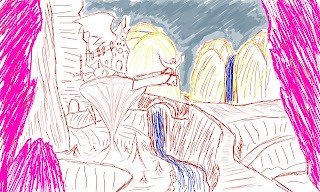I've found that creating a schedule and adhering to it is beneficial is several ways:
- You become organized and know exactly which direction you are heading in. I've found myself often times that, even though I was working quite a lot and have been watching tutorials, that I was a bit lost as I wasn't sure what my final goal was. This feeling of stray unbalances your focus and has a negative impact on your progress.
- It's all about schedules and deadlines in a professional environment. By organizing myself via a schedule I am, in a way, mimicking an environment which I am going to be faced with at a proper workplace.
I have learned a great deal about different workflows and now understand much better how I need to plan my workflow for specific assets.
The upcoming month will see me continue down this path. Also, there are some good networking possibilities, which I will surely attend:
- Creative England Night (Feb. 13th, Birmingham)
- LAUNCH Presents: Microsoft, The Cloud + Apps Gaming (Feb. 28th, Birmingham)
Study-wise, I will focus on improving my texturing skills, because at the moment I feel that is the area I am lacking in a bit. I will take a look at the very popular painting program, MARI to see whether it can be of use to me. Meanwhile, I will continue with the UDK training as well. I need to improve FAST with UDK as by the end of this month I hope to have started importing assets for my final, SS2 project.
Work-wise I will import the two weapon models I have created into UDK and create convincing material for them. I aim to enter at least 2 Polycount challenges, competitions and/or art jams.
Online networking is going to be as crucial as ever as by the end of February, I hope to have added a few more artists to my contact list.
I will attend Google+ Hangout sessions, which I have done so on several occasions by now. They are a very interactive and fun way of working and networking at the same time. You talk to fellow artists via a microphone and share each other's screen so everyone can see what the others are working on.
Again, here is February's business plan:















































